The Timeless Charm of 80s Style Dresses
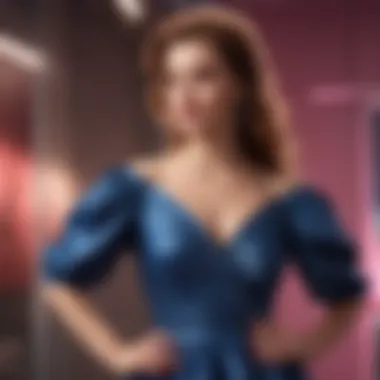
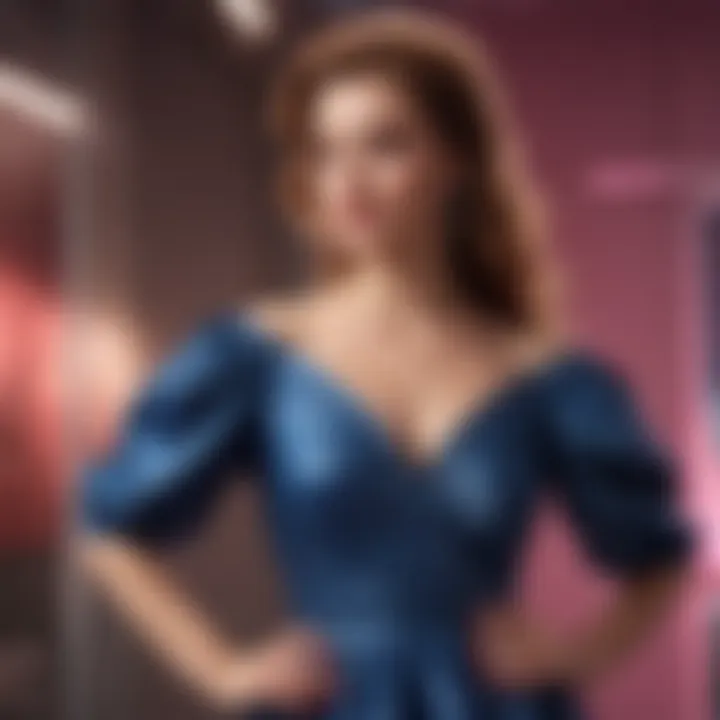
Intro
The 1980s represent a pivotal moment in fashion history. This decade was marked by daring styles and an unabashed embrace of color and texture. It was a time when the idea of personal expression through clothing flourished. Those who wore 80s style dresses reflected the eclectic spirit of the period, which was influenced by various cultural and social factors.
From the vibrant hues to the structured silhouettes, 80s dresses stood out for their uniqueness. Iconic figures such as Princess Diana and Madonna played significant roles in popularizing these looks. Their influence extended beyond just fashion; they encapsulated the cultural shifts of the time. Understanding the fashion trends from this era provides insight into how these choices shaped modern styles.
The following sections will delve into the trends, key styles, and the impact of the 80s on contemporary fashion. By exploring these elements, readers can appreciate not only the aesthetic appeal but also the deeper cultural connections inherent in 80s style dresses.
Preamble to 80s Style Dresses
The 1980s marked a period of significant change and experimentation in fashion, particularly with regards to dresses. This era is characterized by a unique approach to design, reflecting broader cultural dynamics and shifts in society at that time. Understanding the allure of 80s style dresses provides insight into not just the aesthetic choices but also the societal values that accompanied those choices.
From the moment one thinks of 80s fashion, the powerful imagery of bold colors, distinct silhouettes, and innovative materials immediately comes to mind. The decade prioritized individuality and self-expression, leading to the emergence of diverse styles that still resonate today. The influence of pop culture, music, and significant events contributed to the popularity of these dresses, making them iconic in the annals of fashion history.
Furthermore, these dresses weren’t merely items of clothing; they served as a means of empowerment, particularly for women. The introduction of the power dress, which represented strong professional women, is a prime example of this empowerment narrative woven into the fabric of 80s fashion.
In addition to their aesthetic appeal, dresses from this period demonstrate the innovative use of textiles and construction techniques. The playful experimentation with fabrics like taffeta, lace, and stretch materials highlighted a shift towards versatility and comfort without compromising on style.
"Fashion is a form of self-expression, and the sartorial choices of the 1980s exemplified a time when people began to use clothing as a canvas for personal identity."
Overall, studying 80s style dresses allows one to appreciate the marriage of artistry and culture, leading to a deepened understanding of their significance in the broader context of fashion history. This article will further explore these aspects, analyzing the defining characteristics, cultural influences, and the enduring legacy of these vibrant dresses.
Defining Characteristics of 80s Dresses
Understanding the defining characteristics of 80s dresses is crucial to appreciating this pivotal era in fashion history. In the 1980s, fashion underwent a transformation that was bold, inventive, and reflective of the cultural dynamics of the time. Each characteristic played a role in shaping the era's identity, influencing not just fashion, but also the social fabric of society. Below, we discuss three defining elements: bold colors and patterns, structural silhouettes, and fabric innovations.
Bold Colors and Patterns
One of the most striking features of 80s dresses is the use of vivid colors and dynamic patterns. Designers embraced a palette that often included neon shades, pastels, and juxtaposed colors. This approach was not merely about aesthetics; it symbolized a break from traditional fashion norms. Bright colors conveyed a sense of optimism and confidence, reflecting the cultural movements of the time.
Patterns also played a pivotal role. From geometric shapes to abstract prints, these designs were frequently seen on dresses, contributing to their standout nature. The heavy influence of pop culture, especially music, allowed for these expressive designs to flourish.
"Colors and patterns were not just styles; they became a means of self-expression, a wave of individuality that defined the decade."
Benefits of Bold Colors and Patterns:
- Self-Expression: They offered wearers a chance to showcase their personality.
- Visual Appeal: Bright and unique designs attracted attention.
- Cultural Reflection: Colors and patterns mirrored the liberating spirit of the era.
Structural Silhouettes
The structural silhouettes of 80s dresses are essential to the decade's distinctive style. There was a clear emphasis on strong shapes and lines. Many dresses featured defined waists, often achieved through the use of belts or fitted bodices. This not only highlighted the female form but also exuded a sense of power and authority.
A-line skirts, puff sleeves, and shoulder pads became commonplace, allowing women to create visually imposing figures. The goal was not just to be fashionable but to make a statement. The silhouettes reflected the social changes occurring at the time, particularly for women entering the workforce.
Considerations regarding Structural Silhouettes:
- Balancing Femininity with Authority: The designs were meant to empower women in all aspects of life.
- Versatility in Style: Various silhouette styles catered to different occasions—from office wear to evening gowns.
Fabric Innovations
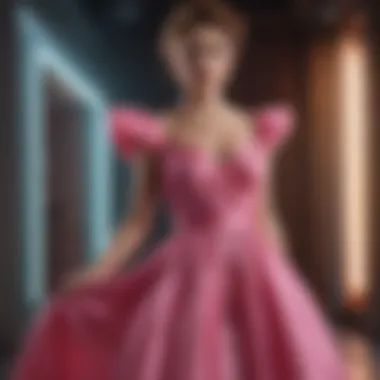
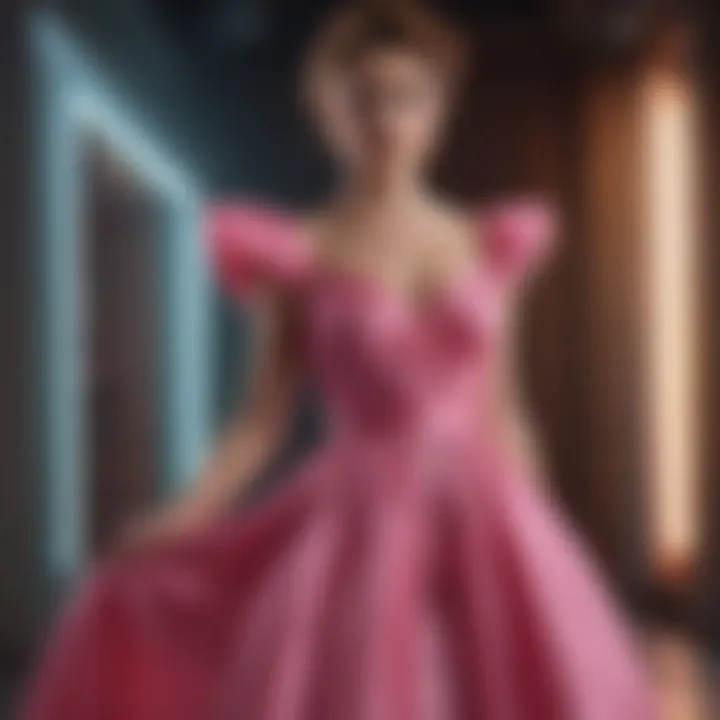
The 1980s also saw a significant evolution in fabric use and innovation. Synthetics like polyester and spandex gained popularity due to their versatile qualities and ability to hold vibrant colors well. These fabrics allowed for the creation of structured dresses while also providing comfort and ease of movement.
Moreover, the introduction of lamé and velvet added a touch of glamour, often utilized in evening wear. This experimentation with fabrics not only added a tactile dimension to dresses but also allowed designers to push boundaries in terms of design capabilities.
Noteworthy Innovations in Fabrics:
- Satin and Silk: Frequently used for evening gowns, exuding luxury.
- Cotton Blends: Offered comfort, making casual wear more appealing.
- Textured Fabrics: Added depth to simple designs, enhancing visual interest.
Cultural Influences on 80s Fashion
The 1980s were not just a decade of distinct fashion; they were a period when fashion was a mirror reflecting broader cultural movements. One crucial aspect of this era was how various cultural influences shaped the design and popularity of 80s style dresses. Understanding these influences provides insights into the creativity and diversity that defined the decade.
Music and Subculture Impact
Music was a significant driving force behind the fashion trends of the 1980s. The rise of genres like punk, new wave, and pop created specific styles that permeated everyday wear. Artists such as Madonna, Prince, and David Bowie not only influenced music but also became fashion icons. Their bold choices encouraged fans to adopt similar styles. For instance, the punk movement, led by bands like the Sex Pistols, introduced a rough edge to style, incorporating leather, studs, and vivid graphic prints into dresses.
Additionally, subcultures impacted the fashion landscape. The New Romantics embraced flamboyance, mixing traditional fabrics with contemporary styles. This blending of fashion and music fostered an environment where the boundaries between identity and personal style began to blur. People viewed fashion not just as clothing but as a means of expression and individuality.
Television and Film as Catalysts
Television and film played pioneering roles in shaping 80s fashion. Iconic movies such as "The Breakfast Club" and "Nine to Five" showcased characters that were relatable yet stylish. The representation of strong female leads wearing power dresses encouraged women to break free from conventional roles. These characters became touchstones for viewers who identified with their narratives and styles.
Television series like "Dynasty" also emphasized opulence, setting trends with extravagant evening wear and hairstyles. The shows depicted a world of glamour that many aspired to, further solidifying the influence of media on personal fashion choices.
Overall, the interplay between music, subcultures, television, and film created a culturally rich tapestry that defined the allure of 80s style dresses. The emphasis on individuality and expression found through these mediums contributed to a unique fashion landscape that continues to resonate today.
"Fashion is not just about clothes; it is about identity, culture, and expression. The 80s taught us how the two are inextricably linked."
In summary, the cultural influences on 80s fashion highlight a transformative era. The fusion of music, television, and subculture not only shaped fashion but also impacted the societal norms of the decade.
Iconic 80s Dress Styles
The 1980s was a pivotal decade in fashion, with iconic dress styles leaving a lasting impact on contemporary trends. These styles not only reflected the vibrant spirit of that era but also showcased the diversity and creativity of fashion designers. Exploring the iconic dresses from this time is essential in understanding the broader cultural shifts and aesthetics of the decade. The focal point should not just be on the garments themselves but also on their social context and influence.
The Power Dress
The Power Dress symbolizes the empowerment of women in the workplace during the 1980s. Typically characterized by sharp tailoring, shoulder pads, and bold colors, these dresses became a uniform for women embracing professional roles. Designers like Gianni Versace popularized this style, signaling confidence and authority. The Power Dress often featured elements that conveyed strength, such as structured shoulders and cinched waistlines. The garments were made of luxurious fabrics, enhancing their visual appeal and elevating their status in fashion.
Wearing a Power Dress often projected a message of ambition and drive. Businesswomen sought to command attention through their attire, and the Power Dress played a crucial role in that narrative. The impact of this style remains relevant as discussions about women's roles in the workplace continue.
Party Dresses and Gowns
The 1980s party dress was a canvas for expression, embracing extravagance and individuality.
Party Dresses and Gowns from the 1980s are known for their vibrant colors, dramatic silhouettes, and playful fabrics. Styles like ruffled skirts, taffeta fabrics, and off-the-shoulder designs became staples for evening wear. Celebrities often flaunted these dresses at high-profile events, turning them into symbols of glamour and celebration.
Designers pushed boundaries with bold prints, sequins, and layers, ensuring these dresses stood out. It's common to see designs that provide a juxtaposition between classic elegance and modern flair. The joy of these dresses lay in their ability to transform routine moments into extraordinary occasions, encouraging a sense of individuality and creativity from those who wore them.
Casual Day Dresses

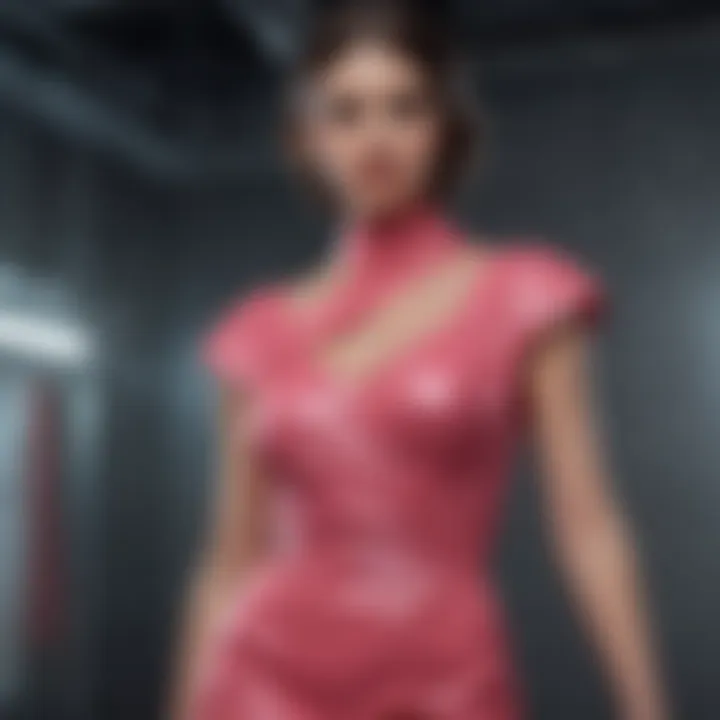
Casual Day Dresses from the 1980s reflect a more relaxed yet stylish approach to daily fashion. These dresses often featured bright colors, playful patterns, and comfortable fabrics. The arrival of casual wear allowed individuals to express their personalities with ease, embracing comfort without sacrificing style.
Often styled with accessories like chunky jewelry or oversized bags, these dresses transcended the notion that casual attire had to be plain or boring. The fusion of functionality and style made them favorites among fashion-forward individuals. Popular elements of casual day dresses included loose fits, graphic prints, and unique cuts, demonstrating the era's versatility.
In summary, the iconic dress styles of the 1980s encapsulate a range of social and cultural shifts. From the confident Power Dress to exuberant Party Dresses and Gowns and laid-back Casual Day Dresses, each style tells a story of its time. The enduring appeal of these dresses continues to resonate with fashion enthusiasts today.
Notable Fashion Designers of the 80s
The 1980s were marked by a unique fashion landscape, one that mirrored societal changes and cultural shifts. Notable fashion designers played a crucial role in defining this dynamic era. Their inspirations came from various sources, including music, art, and individual expression. This section delves into two iconic figures whose contributions shaped the 80s dress scene: Gianni Versace and Vivienne Westwood.
Gianni Versace and the Glamour Movement
Gianni Versace emerged as a foremost figure in the fashion industry during the 1980s. His designs epitomized luxury and opulence, characterized by bold patterns and vibrant colors. Versace's theatrical flair attracted celebrities and helped in establishing fashion as an integral part of popular culture.
He revolutionized the power dress with an emphasis on sex appeal, enhancing the silhouette. Versace's use of unique fabrics such as silk and innovative techniques displayed his commitment to quality and aesthetics. His iconic Medusa logo became synonymous with elegance and was a mark of high fashion.
Notably, Versace drew from various influences, including ancient Rome and Greek mythology. His collections often featured daring cuts, asymmetry, and a meticulous attention to detail, making them stand out on runways and events alike. Many contemporary designers cite Versace as a significant influence. He not only changed the way women viewed fashion but also encouraged self-expression through style.
Vivienne Westwood and Punk Influence
Vivienne Westwood represents the other end of the fashion spectrum. She is widely recognized for her embrace of punk culture in her designs. Westwood played a pivotal role in bringing punk fashion into mainstream visibility. Her work fused rebellious spirit with high fashion, contrasting sharply against the glamour epitomized by designers like Gianni Versace.
Westwood's iconic designs often featured elements such as tartan fabrics, corsetry, and safety pins, which became symbols of punk aesthetics. Her ability to challenge conventional norms set her apart. She encouraged individuals to view fashion as a vehicle for personal and political expression. This challenge to the status quo resonated with a generation that sought individuality and authenticity.
These designers highlight how the 80s fashion scene was not just about clothing but a reflection of broader cultural narratives. Their styles continue to influence fashion today, illustrating the timeless nature of their contributions.
"Fashion is life-enhancing and I think it's a lovely, generous thing to do for other people." - Vivienne Westwood
The Role of Celebrity in 80s Fashion
The influence of celebrities in shaping 80s fashion cannot be overstated. This era was marked by a remarkable intermingling of popular culture and style, where famous personalities became the arbiters of trends. They not only showcased the evolving styles of 80s dresses but also propelled these styles into mainstream acceptance and desire. Through media exposure, celebrities inspired a generation to embrace boldness and creativity in their dress. Their fashion choices often reflected the broader social and cultural shifts that characterized the time.
Influential Celebrities and Their Styles
Many icons emerged during this decade, each leaving a distinctive mark on 80s fashion. Madonna, for example, was synonymous with the decade. Her eclectic outfits, often layering lace, denim, and bold accessories, brought a sense of individuality to women’s fashion. She defined a new era of femininity that was both edgy and empowering.
Another key figure was Princess Diana, whose classic yet modern style captivated audiences worldwide. Her exquisite evening gowns and tailored suits became benchmarks of elegance and sophistication. The unique blend of royal refinement and contemporary chic made her a style icon.
Also noteworthy is Cyndi Lauper, whose vibrant, quirky style expressed her personality and artistry. She embraced flamboyant colors, mixed textures, and unconventional accessories, all of which resonated with the youth culture of the time. These celebrities, along with others including Cher and Whitney Houston, not only embodied the fashion but also influenced public perception of beauty and style.
Red Carpet Fashion in the 1980s
The red carpet during the 1980s became a platform for showcasing extravagant fashion statements. Event attendees were not just there to celebrate talent; they were there to make grand entrances wearing eye-catching ensembles. The likes of Joan Collins and Jennifer Beals strutted in voluminous gowns that often emphasized shoulder pads and dramatic silhouettes.
The significance of these displays lay in their ability to dictate current trends. Each event was a spectacle, and the fashion choices made there significantly influenced designers' collections.
"Celebrities transformed red carpet appearances into a fashion showcase that captured the public's imagination."
Designers were quick to take note of what celebrities wore, frequently using these moments to highlight their most ambitious creations. Many dresses featured sequins, lace, and asymmetrical necklines, illustrating the decade's love for extravagance.
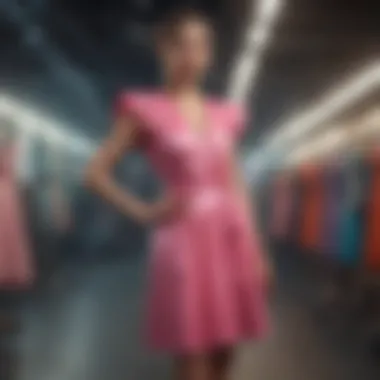
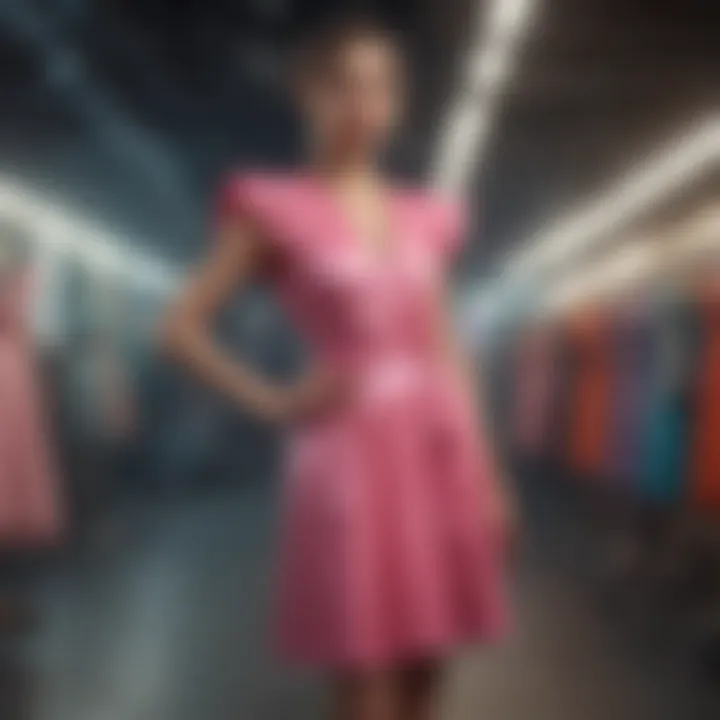
In summary, the role of celebrity in 80s fashion not only shaped the silhouettes and styles of the time but also injected a sense of urgency and excitement in the fashion landscape. Their influence continues to be felt in modern adaptations of 80s aesthetics, highlighting the timeless appeal of this vibrant decade.
The Resurgence of 80s Style in Modern Fashion
The resurgence of 80s style in modern fashion serves as a significant touchpoint in understanding how past influences continue to shape contemporary aesthetics. The 1980s were marked by distinctive silhouettes, vibrant colors, and a sense of individuality. Nowadays, designers and brands are revisiting these elements to create new pieces that resonate with today’s consumers.
Contemporary Designers Drawing Inspiration
Many contemporary designers draw direct inspiration from 80s style dresses, reinterpreting the iconic looks for a new generation. Designers such as Balenciaga and Moschino bring bold colors and exaggerated shapes into their collections. This revival is not just about copying older styles; it involves a blend of nostalgia and modern sensibility.
Key successful aspects include:
- Exaggerated silhouettes that emphasize the waist or create voluminous shapes.
- Dynamic patterns that call back to the playful graphics of the 80s.
- Innovative fabrics that marry vintage textures with modern technology for practical wear.
Also, the use of 80s-style accessories, such as oversized earrings and statement belts, has become prominent in recent collections. This seamless integration of vintage and contemporary styles offers versatility that appeals to fashion enthusiasts today.
Revival in Pop Culture
The revival of 80s style also thrives in pop culture. Movies, television series, and social media platforms frequently echo this vibrant era. For instance, shows like Stranger Things showcase 80s fashion, making it not just popular but also relatable to younger audiences.
Influences from pop culture manifest into:
- Music videos, where artists encapsulate the flashy and bold elements of 80s style, often incorporating bright outfits and themed visuals.
- Fashion influencers who adopt and promote 80s looks on platforms like Instagram and TikTok, making the aesthetic accessible and desirable.
Through these mediums, the allure of 80s style dresses reinvigorates consumer interest in retro fashion. As people seek unique ways to express their individuality, the elements from the past amalgamate into present-day wardrobes, highlighting the timeless appeal of 80s styles.
"The beauty of fashion lies in its ability to reinvent itself; what was once unique can become relevant again."
Styling 80s Dresses Today
The topic of styling 80s dresses for today’s fashion landscape reflects the ongoing evolution of personal style and cultural trends. With the resurgence of vintage fashion, 80s dresses have gained renewed attention, proving that they can fit seamlessly into contemporary wardrobes. This section explores how these dresses transcend time and remain relevant. It offers crucial insights into combining nostalgic pieces with modern designs to create styles that resonate with today’s aesthetic ideals.
Combining Vintage with Modern Elements
When styling 80s dresses, the key is to blend vintage elements with modern fashion sensibilities. Wearing an 80s dress does not mean recreating an entire look from that era. Instead, it can mean taking inspirations from the bold cuts and colors while adding a contemporary twist. Here are some effective ways to achieve this balance:
- Layering: Consider pairing a vibrant 80s dress with a sleek modern jacket. This approach provides structure while maintaining the dress's playful spirit.
- Footwear Choices: Opt for today’s stylish footwear, like sleek ankle boots or minimalist sneakers, to update the dress's overall appearance.
- Mixing Textures: Combine different fabrics. A structured 80s dress can look fresh alongside modern fabrics such as denim or jersey, allowing for contrast while keeping the overall outfit cohesive.
- Tailoring: Altering an 80s dress adds a modern fit and feel. This could entail shortening the hem or adjusting the silhouette to complement your body shape better.
By emphasizing these design elements, individuals can create a unique style that honors the original 80s appeal while also fitting into the present-day aesthetic.
Accessorizing for a 21st-Century Look
Accessorizing plays a crucial role in successfully styling 80s dresses today. The right accessories can transform an outfit, ensuring it doesn’t feel outdated. Here are essential tips to modernize your 80s dress through careful selection of accessories:
- Statement Jewelry: Bold, chunky jewelry works beautifully. Consider oversized earrings or layered necklaces that echo the excess of the 80s, but with a modern twist, using materials like acrylic or mixed metals.
- Bags: Choose crossbody or minimalist bags made from contemporary materials. A structured handbag can add sophistication, while a playful fanny pack can offer a casual vibe.
- Belts: A well-placed belt can define the waist and enhance the overall silhouette. Opt for wide, statement belts or sleek modern styles to create a polished look.
- Sunglasses: Large, geometric sunglasses can evoke an 80s vibe while feeling trendy today. They serve both functional and aesthetic roles, making any outfit stand out.
Culmination: The Timeless Appeal of 80s Dresses
The fascination with 80s style dresses is not merely a fashion whim; it is a profound acknowledgment of a distinctive era marked by creativity and innovation. These dresses captured the spirit of a generation that embraced boldness in color, silhouette, and fabric. In examining why these dresses continue to resonate today, several essential aspects emerge.
Firstly, the cultural context of the 1980s plays a crucial role. This period witnessed a blend of diverse influences ranging from music to politics. The dresses symbolize a celebration of individuality and empowerment. Women in power suits and vibrant party dresses made significant strides in various fields, reshaping societal norms and expectations. The appeal lies in this blend of feminism and flamboyance that can feel relatable even in contemporary discourse.
Moreover, the aesthetic qualities of 80s dresses are inherently striking. The structural designs, including shoulder pads and cinched waists, assert a confidence that many find attractive. The use of materials like taffeta and sequins adds a layer of luxury often missing in modern fashion. This combination of form and function allows them to remain relevant, providing a sense of drama and occasion that modern casual wear frequently lacks.
It is also important to note the revival of vintage fashion and how it influences today’s trends. Many fashion designers draw inspiration from the past, creating pieces that evoke the essence of 80s style while integrating modern sensibilities. This cyclical nature of fashion underlines a fundamental truth: the past continuously informs the present, baking the old into the new.















